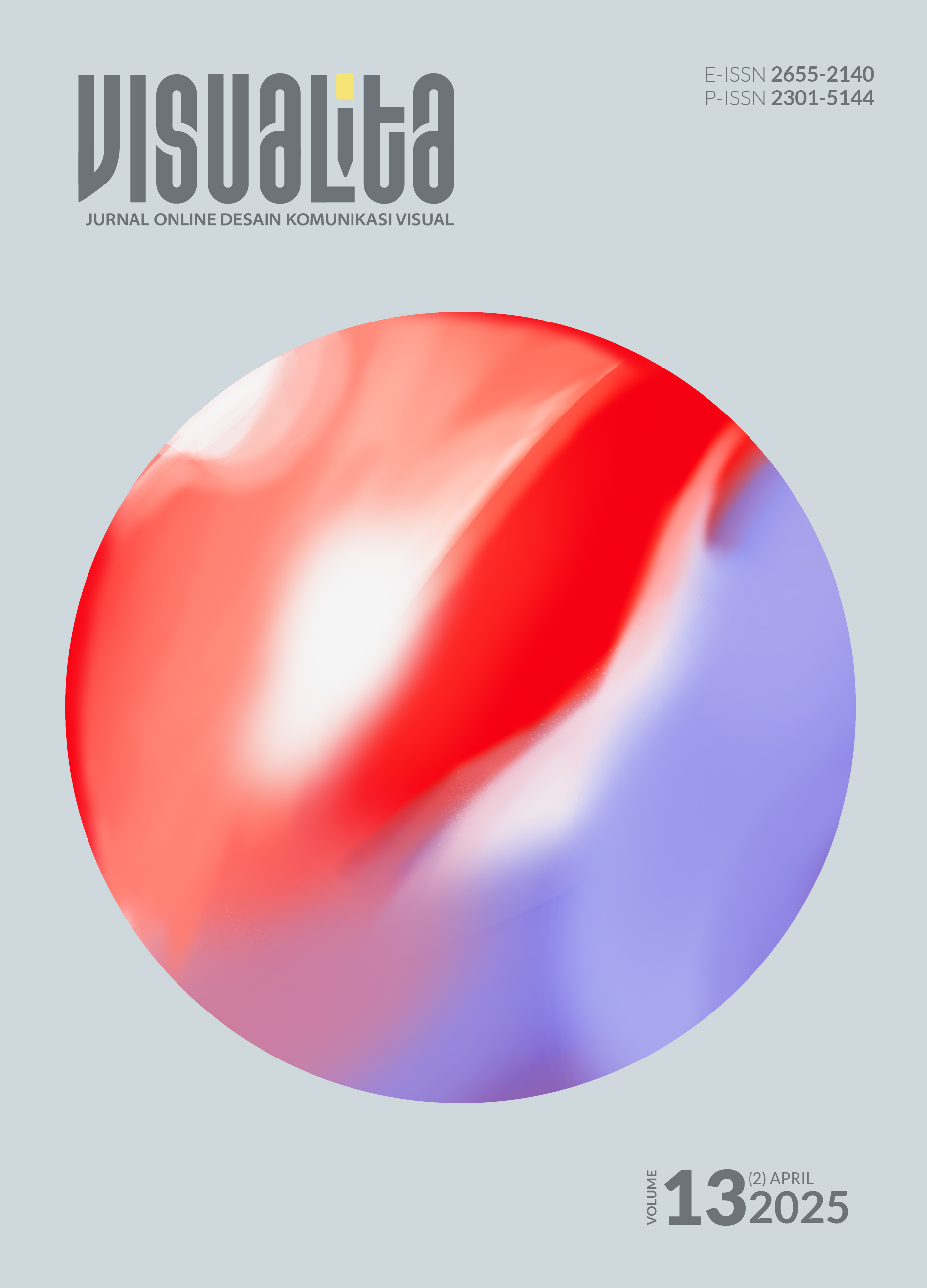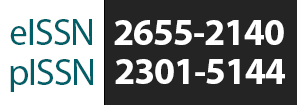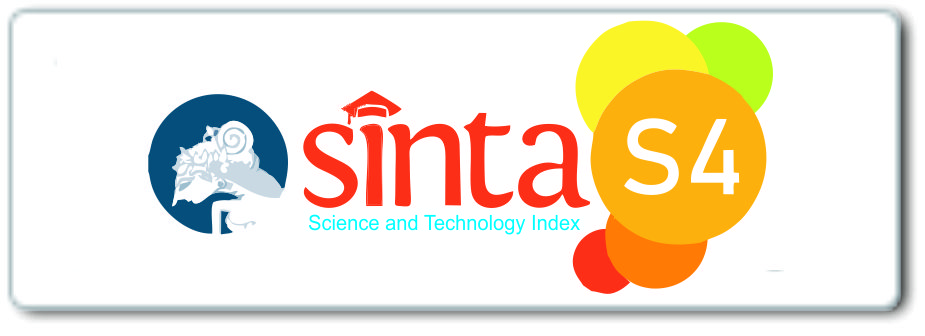The digital comic ‘Di Balik Topeng’ as an Informational Medium for Raising Awareness about Illegal and Unsafe Drugs
DOI:
https://doi.org/10.34010/visualita.v13i2.13910Keywords:
Design, Education, Medicine, Comics, DigitalAbstract
Health issues have become a major public concern, driving significant developments in the health sector. However, this situation is exploited by certain individuals selling unsafe and illegal drugs that pose serious health risks. Weak supervision by BPOM and low public awareness about medications worsen the circulation of such drugs. Therefore, an informative medium is needed to raise public awareness about drug consumption. This qualitative research was conducted through literature studies, observations, interviews, and questionnaires. Data were analyzed through reduction, presentation, and verification stages. The findings show that most respondents lack understanding of illegal drugs and tend to buy medicines without checking their safety. Respondents also showed strong interest in educational media that are visual and engaging, such as digital comics. The design process applies visual communication design and storytelling approaches, combining narrative strength with communicative visuals. The stages include idea exploration, script writing, character and background visualization, and digital comic page production. Digital comics are chosen for their ability to effectively, attractively, and deliver health messages, raising awareness and caution about the dangers of illegal drugs.
Downloads
References
Ayati, A., & Nugraha, N. D. (2024). ANALISA SYSTEM OPERASI APLIKASI WEBTOON Abstrak. Jurnal Sistem Informasi Aplikasi Teknologi Informasi, 1(3), 169–177.
Bentri, S. A., Magh’firoh, R. H., & Arsyam, S. F. (2023). Perancangan Komik Digital untuk Mengedukasi Remaja tentang Isu Pembajakan Film. KONSTELASI: Konvergensi Teknologi Dan Sistem Informasi, 3(2), 297–306. https://doi.org/10.24002/konstelasi.v3i2.7130
BPOM. (2023). BPOM Temukan Lebih Dari 2 Juta Pieces Produk Mengandung Bahan Dilarang/Berbahaya. 9 12 2023. pom.go.id
Christin, M., Obadyah, A. B., & Ali, D. S. F. (2021). Transmedia Storytelling. Syiah Kuala University Press.
Effendy, E., Siregar, E. A., Fitri, P. C., & Damanik, I. A. S. (2023). Mengenal Sistem Informasi Manajemen Dakwah (Pengertian Sistem, Karakteristik Sistem). Jurnal Pendidikan Dan Konseling, 5(2), 4343–4349.
Febriani, I. N., & Hidayat, S. (2020). PERANCANGAN MEDIA INFORMASI MENGENAI PENTINGNYA LITERASI DIGITAL PADA ANAK Designing Media Information About The Importance of Digital Literacy in Children. EProceedings of Art & Design, 7(2), 2051–2061.
Gowasa, Y., Daeli, J., Marbun, J., & Devi, R. S. (2023). Perlindungan Konsumen Terhadap Beredarnya Obat Obatan Ilegal. JURNAL RECTUM: Tinjauan Yuridis Penanganan Tindak Pidana, 5(1), 750. https://doi.org/10.46930/jurnalrectum.v5i1.2813
Haq, M. D., Rahman, Y., & Tohir, M. (2024). Penggunaan Visual Storytelling pada Alat Bantu Monitoring Tumbuh Kembang Anak. VISUALITA Jurnal Online Desain Komunikasi Visual, 12(2 April), 140–152.
Kamar, R. R., Lionard, A., R. S. (2023). PERANCANGAN STORYBOARD UNTUK ANIMASI MUSIC. E-Proceeding of Art & Design, 10(6).
Sagita, N. S. (2023). Ini Kandungan Bahan Kimia di Obat Tradisional Ilegal, Picu Kerusakan Organ. 4 Juli 2023. health.detik.com
Sihombing, D. (2001). Tipografi dalam desain grafis. Gramedia Pustaka Utama.
Soleha, S. R., & Udjianto, A. N. (2021). Analisis Unsur-unsur Grafis dalam Komik Si Juki. Prosiding Konferensi Mahasiswa Desain Komunikasi Visual (KOMA DKV), 1(1), 119–126.
Tinarbuko, S. (2015). DEKAVE, Desain Komunikasi Visual Penanda Zaman Masyarakat Global. In Media Presindo.
Xu, K. W. Z., Mohd Pahme, N. F., Mohd Shuib, A. S., Abdullah, A. F., & Soedewi, S. (2023). The Impact Of Misinformation In Social Media That Caused Panic Behavior On Covid-19 Pandemic Among University Students In Ipoh, Perak. Idealogy Journal, 8(2), 221–232. https://doi.org/10.24191/idealogy.v8i2.471
Downloads
Published
Issue
Section
License
Copyright (c) 2025 Sarah Laila Puspitasari, Syarip Hidayat, Asep Kadarisman

This work is licensed under a Creative Commons Attribution-NonCommercial 4.0 International License.
Authors who publish with Visualita agree to the following terms:
- Authors retain copyright and grant the journal right of first publication with the work simultaneously licensed under a Creative Commons Attribution-NonCommercial 4.0 International License.
- Authors are able to enter into separate, additional contractual arrangements for the non-exclusive public distribution and display of the journal's published version of the work (e.g., post it to an institutional repository or publish it in a book), with an acknowledgement of its initial publication in this journal.
- Authors wishing to include items (such as images or other media, or any creative works of others whether previously published or not) must contact the original copyright holder to obtain explicit permission to publish these items in Visualital. Writing permission should include: the title(s) of any copyrighted work, original place of publication if applicable, and an acknowledgement of having read Visualita copyright notice. Authors are responsible for obtaining this permission and keeping it in their own records for later verification.






